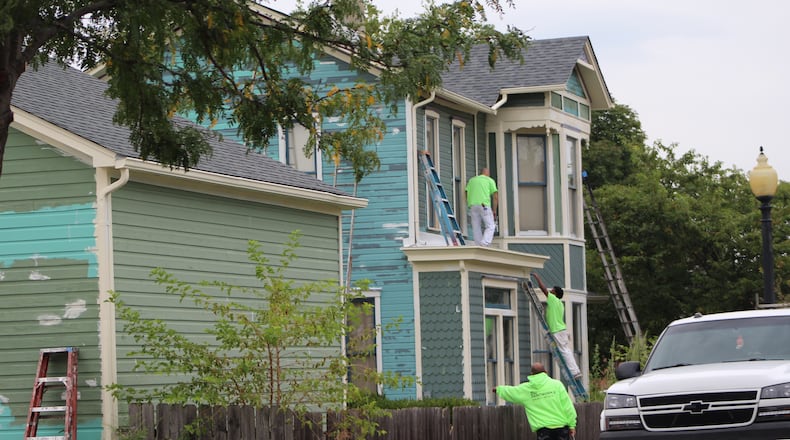The neighborhood continues to improve, with more people moving in, residents renovating their homes and some home sellers getting nearly every dollar of their asking price, said Dayton City Commissioner Jeff Mims Jr., who moved into the area several years ago.
RELATED: Home values surge in parts of Dayton, slip in others
Home values in Wright Dunbar have risen more than in most Dayton neighborhoods, and the city sometime soon will get another crack at finding a developer for the vacant properties, Mims said.
“There’s no reason for us to panic, because clearly, the value of the area continues to grow,” Mims said.
Earlier this year, the city issued a request for qualifications or proposals from firms interested in building out 30 vacant lots in the Wright Dunbar Village neighborhood.
The city said it was prepared to sell all of the lots in the neighborhood for $1 to an experienced builder for a residential development.
But the deadline to submit a proposal or statement of qualifications has come and gone, and no one submitted a response.
MORE: Thousands of vacant lots available
Wright Dunbar Village, located just south of the business district on West Third Street, has evolved into a pleasant residential area, featuring some colorful renovated historic homes and new ones constructed with historic designs.
The city has long said that Wright Dunbar Village can become a distinctive, historic community by “carefully” blending new housing with the historic housing stock.
The area was designated as a historic district in 2002, and builders must follow historic guidelines and structures must be “compatible” with surrounding properties.
The neighborhood has a mix of newly constructed and renovated turn-of-the-century houses, which are one or two stories.
Dozens of new homes were built in the neighborhood following sponsored events by the Home Builders Association of Dayton in the mid-1990s and the early 2000s, the city said. The city of Dayton also made significant investments to help rehab properties and remove blight.
MORE: 1,000 and counting: Dayton’s home fixer-upper program grows
Residential values in the Wright-Dunbar area have increased by 10 percent, which was more than most other Dayton neighborhoods and housing developments, according to the Montgomery County Auditor’s triennial valuation update.
Commissioner Mims said his neighbor recently sold his place, and got 99 percent of his asking price.
Mims said he feels confident that the vacant lots will become housing, once the city and its housing partner sit down and figure out a new strategy to market the area to lure development.
Mims said the area is ripe for new investment because of the strong housing market, the development activity along the Third Street business district, an initiative to transform nearby public housing and the commercial reuse of a large, close-by manufacturing facility.
In the last decade, the surrounding area has benefited from about $250 million in housing, infrastructure, education and health care investment, the city said.
MORE: Mixed opinions on pet-friendly patio option for restaurants
Ten residential units were built in the Wright-Dunbar Business District last year, and housing demand remains strong in that part of the city, officials said.
The city approved an urban renewal plan for Wright-Dunbar Village in 1995, which called for removing substandard and obsolete structures and offering land to developers to build new homes. The plan was updated in 2003 and 2013.
The area has a rich history. Wilbur and Orville Wright lived at 7 Hawthorne St. and Paul Laurence Dunbar lived a few blocks away.
About the Author

